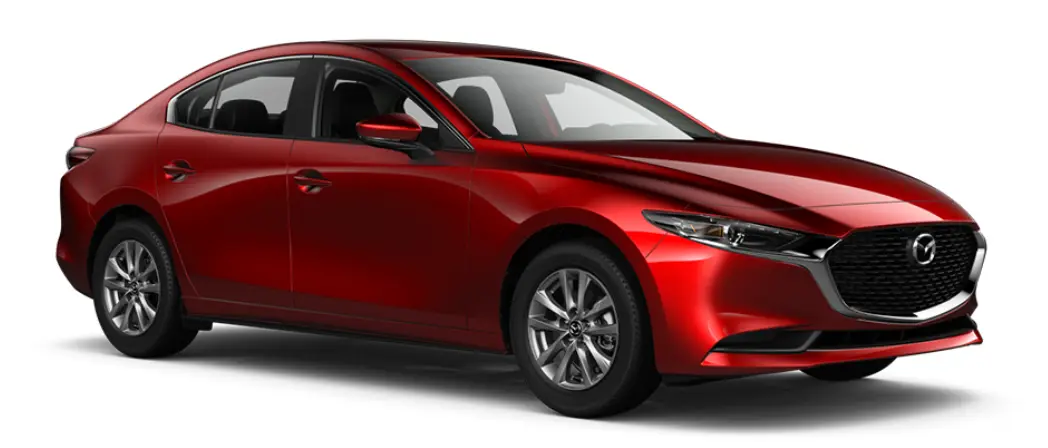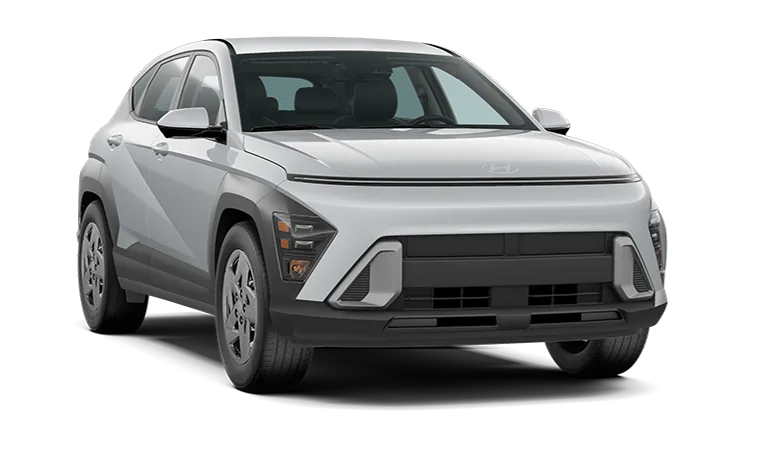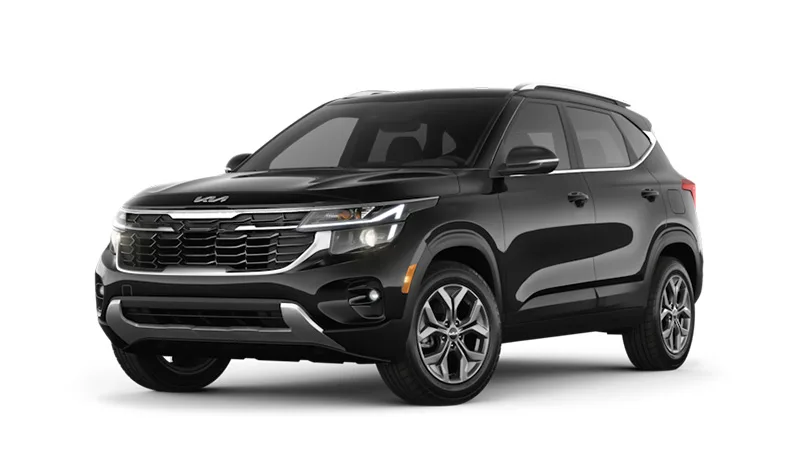Most teenagers have little or no credit history, which can make getting a car loan challenging. Plus, credit blunders — like making late payments or no payments at all — can take a toll on a credit score for years.
But that doesn’t have to stop you getting the car you want. In this guide we’ll show you how to buy a car as a teenager, how to compare car loans for young drivers, and what sales traps and hidden costs to watch out for before you sign on the dotted line.
Can I buy a car as a teenager?
Yes, you can buy a car on your own if you’re a teenager — but you’ll need to be the age of the majority in your province or territory. Even if you are old enough, you’ll have a difficult time qualifying for a car loan if you haven’t yet built up your credit history or have red marks on your credit report. In that case, you’ll likely need to bring on a cosigner with an established credit history to qualify for financing.
How old do you have to be to finance a car?
You have to be the age of majority in your province or territory to finance a car. That means you need to be 18 years old to finance a car in Alberta, Manitoba, Ontario, PEI, Quebec and Saskatchewan. You’ll have to wait until you’re 19 years old to get auto financing in British Columbia, New Brunswick, Newfoundland, Northwest Territories, Nova Scotia, Nunavut and Yukon.
Some of the best first cars for teenagers in Canada
| Model | MSRP | Features |
|---|---|---|
2024 Hyundai Kona | $25,999 |
|
 2024 Mazda3 | $24,200 |
|
2024 Kia Seltos | $28,083 |
|
4 ways to finance your first car as a teenager
There generally 4 ways you can finance your first car:
1. Online car loans for young drivers
Since you’ll likely have no or little credit history when you’re ready to buy a car as a teenager, your best bet is to look for car loan lenders specializes in bad credit. Rates vary but can be high, so it pays to shop around to get the best deal.
2. Get a cosigner
If you’re finding it difficult to get a car loan with little or no credit – or perhaps the interest rates you’re offered are too high – a cosigner with good to excellent credit might be your best option. Many banks or online lenders accept cosigners on car loans, especially for existing account holders. Keep in mind that even with a cosigner, most car loans for young drivers require the borrower to be at least 18 years old.
3. Save up over time
If a vehicle is a must-have, saving a few dollars out of each paycheck can add up. Whether you’ve got a part-time job or work odd-jobs around your house or neighborhood, consistently setting aside money can give you more options and help you save when you’re ready to buy your first car. A combined savings approach between parents and teens can make this an option that doubles as a valuable teaching experience.
4. Crowdfunding
Although it might seem like a strange way to raise money for a car, crowdfunding can give you a way to raise donations from friends and family who want to help you get your first set of wheels. You probably won’t get money from complete strangers this way, but crowdfunding can still provide a convenient way for those who care about you to help you reach your savings goals. If you’re thinking of crowdfunding your first car as a teenager, consider using popular sites like GoFundMe and Fundrazr.
What to keep in mind when comparing car loans for young drivers
When you’ve found that perfect car, it may be tempting to grab the first loan that comes around — but it might not be the best loan. Avoid these pitfalls when shopping:
- Ignoring the rates and fees outlined in your contract. Some dealerships offer low-interest financing up front, then slip in higher rates and fees when it comes time to sign the contract. Look out for exorbitant fees for late payments, penalties for prepayment or adjustable rates, which can mean much higher payments down the road as interest rates rise.
- Packing payments. Some dealers will get borrowers to agree to an inflated monthly payment, then “pack” the loan with products like paint protection packages, extended warranties or anti-theft devices that they claim are either free or discounted.
- Opting for a loan extension. Dealers will often offer to extend a loan to six or seven years. While this will lower the monthly payment, you’ll end paying on the loan a lot longer — which means paying much more towards interest. You may even end up owing more than the car is worth.
Car loan costs and fees to watch out for
When a car loan includes more costs than you expected, you may be paying too much. Make sure you look out for these added — and sometimes hidden — costs before you sign the loan documents.
- Documentation fees. Aside from paying taxes and licensing costs, you might be on the hook for registration and documentation fees, which can easily range from $100 to over $200 depending on where in Canada you live. Before signing, ask the dealership to give you an “out-the-door” price that factors in these extra expenses.
- Dealer financing fees. Dealer financing can often include an added dealer fee on top of the low quoted interest rate for an auto loan. Ask for the APR — interest rate plus taxes and fees — instead of just the base interest rate to make sure you know exactly what you’re paying for.
- Prepayment penalties. Some lenders add in a hidden fee called a prepayment penalty for paying off your loan early. Have your lender point this out if such a fee exists, and try to negotiate it down if you can.
- GAP insurance. GAP insurance pays the difference between what is owed on your car and what the insurance company will pay if your car is stolen or totaled. This is optional, so don’t let your dealership or lender tell you differently. If you do decide to purchase a policy, think twice before bundling the cost with your loan, since it will add to your interest payment each month.
- Extended warranties. Also called service contracts, these warranties cover many of the more expensive costs of repairing your vehicle not covered by your manufacturer’s warranty. However, it can get expensive. And the majority of customers don’t end up using it, so consider whether it’s worth it before buying.
4 car-buying tips for teenagers
There’s no undo button when it comes to buying a car. Make sure you follow these tips to get the best deal when you buy a car as a teenager.
- Consider used. As a first-time car buyer, it’s more important than ever to find the best vehicle at the price you need — and that may mean buying a used car. These days you don’t have to go in to a dealership to shop used cars, because there many used car sites and online dealerships designed to help you shop entirely or mostly online for a used car.
- Safety first. Used or new, check safety ratings on the National Highway Traffic Safety Administration website to ensure you’re buying a safe ride. Check out our full guide to car safety ratings to learn what to look out for.
- Test drive it. Before buying a vehicle, take the time to do a test drive. Not all vehicles fit all people. When you’re shopping for your first car as a teenager, make sure to take things like blind spots, roominess and comfort into consideration.
- Check the records. If you’re buying used, look at the maintenance records to see if the vehicle was well maintained. Also think about the number of kilometres on the car. That shiny red convertible may look good — but you may want to look at another car if it’s already at 300,000 km. If it has fewer than 150,000 km on it, the original manufacturer warranty may still apply.
Bottom line
There’s a lot to consider if you want to learn how to buy a car as a teenager. Car loans for young drivers can set the stage for establishing a credit history. And keeping up with repayments will pave the way to a high credit score, which will come in handy when you’re looking to buy your first home or qualify for a competitive credit card.
Educate yourself before visiting a dealership so you can get the best deal possible on a car. To help, you can check out our guide to getting a car loan.
Frequently asked questions about buying a car as a teenager
More guides on Finder
-
How to withdraw funds from Binance Canada
Find out what to do if you’ve been affected by Binance’s withdrawal from Canada.
-
Methodology for business bank accounts
Here’s our methodology for scoring the features that matter, and picking the top business bank accounts in Canada.
-
100 Envelope Challenge: What it is and how it works
We break down the 100 Envelope Challenge, a viral TikTok trend that can help you save money fast.
-
Loan Lender Financial review: Should you apply?
Is Loan Lender Financial legit? Find out in this review.
-
How much a business loan down payment costs you and when it’s required
Some business loans don’t require down payments, while others require up to 15% or more of the loan amount.
-
What is a high interest savings account?
Your guide to high interest savings accounts, how they work and how to maximize your savings.
-
How to open a savings account
Learn how to open a savings account and which banks let you open one online.
-
Cash advance apps vs. payday loans
Cash advances are cheaper but smaller. Payday loans offer larger loan amounts but at a high cost.
-
Compare car loans in Canada for November 2024
Compare interest rates, loan terms and fees to find yourself an affordable car loan.
-
5 apps like Empower
Compare lenders and apps like Empower in Canada to get fast, convenient funding.


